Schedule A Free Personal Typing Interview
Find your type and begin your enneagram journey!
Who we are
Welcome to Learn The Enneagram
Learn the Enneagram is a community of individuals interested in learning and teaching the Enneagram system. The school offers courses, workshops, and training programs for individuals to understand better the Enneagram, its history, and its applications. Learn The Enneagram School provides a safe and supportive environment for individuals to explore their personality types and develop self-awareness.
Schedule A Free Personal Typing Interview!
enneagram Pattern
What Is The Enneagram And How It Works!
Are you ready to embark on a journey of self-discovery, exploring all facets of your being and recognizing how they shape who you are? The Enneagram is the key that unlocks this adventure; each personality type offers an insightful look into our motivations in life! Will yours be that of an independent individualist or investigative sleuth? With nine distinct types—from challengers and peacemakers to passionate reformers, helpers, ambitious achievers, and unique individuals–plus their influential wings, three centers, and twenty-seven subtypes – now’s your chance to understand your personality patterns and bring out the real YOU.
This ancient tool of psychological wisdom offers a unique insight into our personalities that can lead to incredible self-awareness and personal growth and can be used as a compassion tool for understanding others. Embark on this captivating journey as you discover what it means for you individually ––and collectively––to truly awaken from your unconscious patterns!
The Enneagram is a system of personality types that describes nine different ways of seeing and experiencing the world. Each Enneagram type has distinct characteristics, including core motivations, fears, desires, strengths, and weaknesses. These characteristics shape our thoughts, emotions, behaviors, and relationships and influence how we see ourselves and others.
The Enneagram is typically represented as a nine-pointed diagram, with each point representing a different Enneagram type. The types are often numbered from One to Nine, with each number corresponding to a specific type. However, it’s important to note that the Enneagram is not just a set of labels, numbers, or categories but a complex and nuanced system that involves a deep understanding of the human psyche.
Each Enneagram type has a unique perspective on life, shaped by its core motivations and fears. These core motivations and fears can manifest in different ways, depending on the individual and their life experiences.
One of the strengths of the Enneagram is its ability to help individuals develop greater self-awareness and personal growth. By understanding their Enneagram type and the patterns of thought, emotion, and behavior associated with it, individuals can gain insight into their strengths, weaknesses, and blind spots. They can also learn to cultivate more compassion, empathy, and understanding for themselves and others, leading to more fulfilling relationships and a greater sense of purpose in life.
Overall, the Enneagram is a powerful tool for personal and spiritual growth, offering a unique and nuanced perspective on the human experience. While it requires effort and self-reflection to understand and integrate fully, the rewards of this process can be transformative and life-changing.
enneagram symbol meaning
Understanding the Enneagram Symbol
Unraveling the nine-pointed Enneagram symbol can reveal a wealth of insights into how we interact with ourselves, others, and the world. It’s been crafted from two Greek words: ‘ennea’ representing nine distinct approaches to life, and ‘grammos’, an emblematic representation of each strategy. The structure itself is divided into three centers – head (5-6-7), heart (2-3-4) & body(8.-9-.1). The Enneagram symbol is a geometric figure that is used to represent the nine Enneagram types. It consists of a circle with nine points on its circumference, connected by lines and arranged in a specific pattern. Each point represents a different Enneagram type, and the lines between them represent the relationships between the types.
The Enneagram is divided into three Centers: the Body Center, the Heart Center, and the Head Center. You will learn about each of these Centers and how they relate to the different personality types.
9 Enneagram Types
Enneagram Types
The Enneagram is a personality typology system that describes nine types of human personality characterized by a distinct set of attitudes, motivations, and behaviors. The nine types are as follows: Type 1 – The Perfectionist, Type 2 – The Giver, Type 3 – The Performer, Type 4 – The Romantic, Type 5 – The Observer, Type 6 – The Loyal Skeptic, Type 7 – The Epicure, Type 8 – The Protector, Type 9 – The Mediator.
Three Centers of Intelligence
Enneagram Centers
The Enneagram is an in-depth personality system with nine distinct types, broken down into three centers — (8,9,1) Body Center – The instinctive Center, (2,3,4) Heart Center – Emotional, Feeling Center, and (Types 5,6,7) Head Center – Thinking Center -provides an in-depth understanding of the individual’s core motivations, fears, desires, and patterns of thinking, feeling, and behaving.
27 Enneagram Subtypes
Instincts & Subtypes
The Enneagram outlines three instinctual drives – self-preservation, one-to-one, and social. These instincts have unique needs that guide our behavior in various situations. The language enriches us with insight into the 27 enneagram subtypes, allowing us to recognize our weaknesses and strengths within these innate impulses towards self-preservation, one-to-one relationships, and social settings.
Enneagram 3 Centers of Intelligence
The Enneagram of Personality Types is based on the idea that there are three centers of intelligence in the human body: the head center, the heart center, and the body center. Each center corresponds to a different way of experiencing the world, and each Enneagram type has a dominant center that shapes their personality and behavior.
The head center, also known as the thinking center, is where thoughts, ideas, and mental processes take place. Enneagram types Five, Six, and Seven are associated with the head center. People with a dominant head center tend to be logical, analytical, and cerebral. They often approach the world with a questioning and skeptical attitude and are constantly seeking new information to make sense of the world around them. They may struggle with anxiety, fear, or worry and have difficulty making decisions.
The heart center, also known as the feeling center, is where emotions, values, and interpersonal connections arise. Enneagram types Two, Three, and Four are associated with the heart center. People with a dominant heart center tend to be empathetic, caring, and attuned to the emotions of others. They often value relationships and are driven by a desire to be loved, appreciated, and recognized. They may struggle with feelings of inadequacy or shame and have difficulty asserting their own needs and desires.
The body center, also known as the doing center, is where physical sensations, instincts, and actions take place. Enneagram types Eight, Nine, and One are associated with the body center. People with a dominant body center tend to be practical, grounded, and action-oriented. They often trust their gut instincts and strongly sense right and wrong. They may struggle with anger, frustration, or aggression and have difficulty relaxing or slowing down.
Learn THe Enneagram
Three Enneagram Centers
The Enneagram can unlock the key to understanding ourselves and those around us. It’s a powerful 3 x 3 arrangement of nine personality types further grouped into three centers: the Body Center or Instinctive Center (Type 8, Type 9, and Type 1), the Heart Center or Feeling Center (Type 2, Type 3, and Type 4), and the Head Center or Thinking Center (Type 5, Type 6, and Type 7). Each Center has its own distinct characteristics, strengths, and challenges.
The Body Center
Instinctive Center (8,9,1)
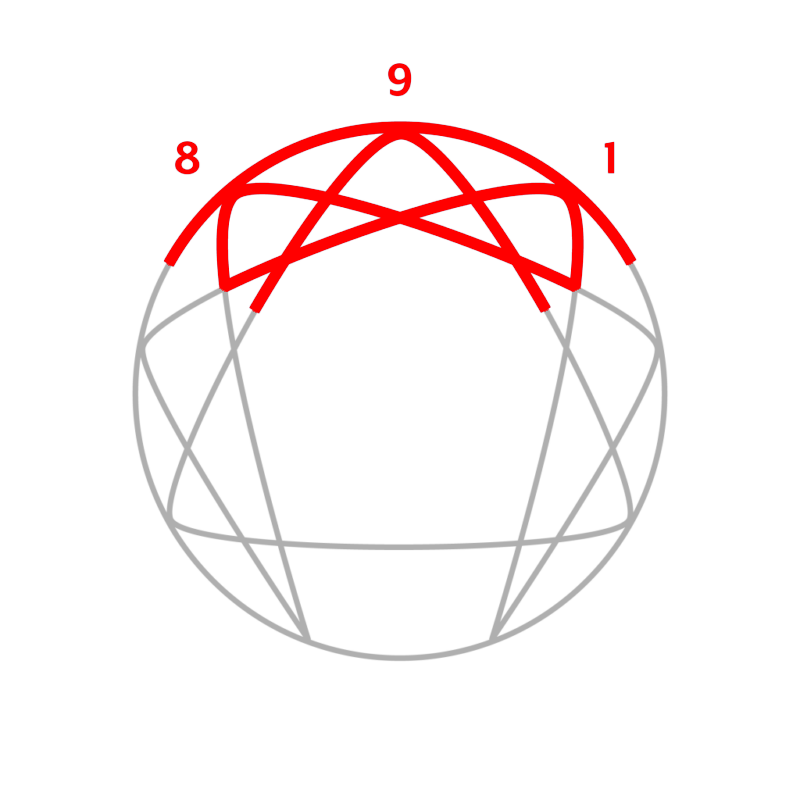
The Instinctual Center: Body center types are at ease following their body-based wisdom, moving on instinct and trusting in the power of sensation to help them discern the right action. Their goals lie in ensuring personal security, social acceptance, and control over the environment around them.
The Heart Center
Feeling Center (2,3,4)
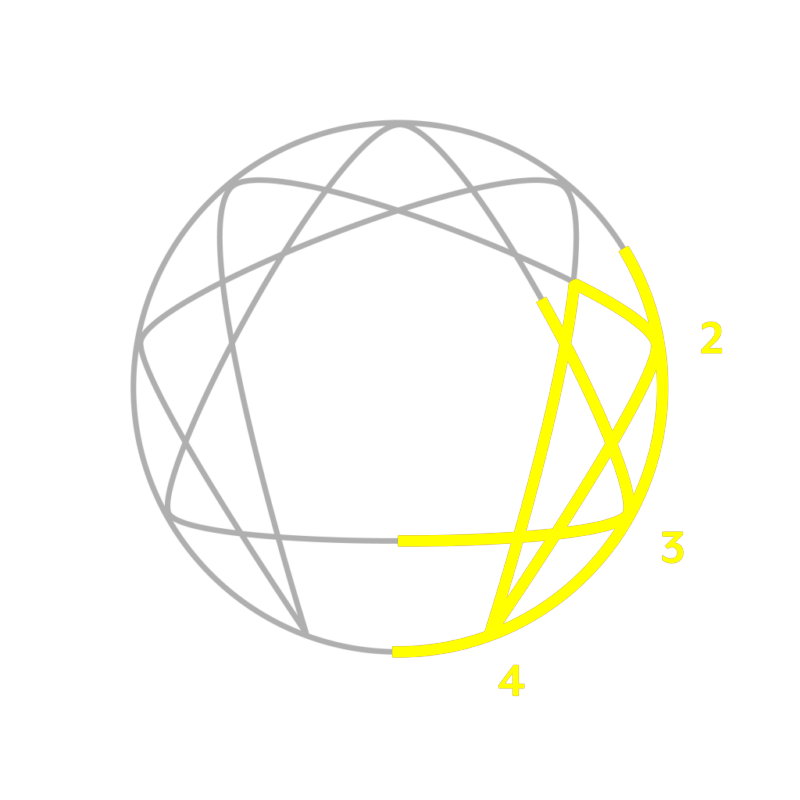
The Emotional Center: Feeling-based types follow their hearts, interpreting the world through the depth of emotion and cultivating a healthy self-image. They seek an understanding based on compassion and acceptance – setting goals to foster love, appreciation, and admiration from others.
The Head Center
Thinking Center (5,6,7)
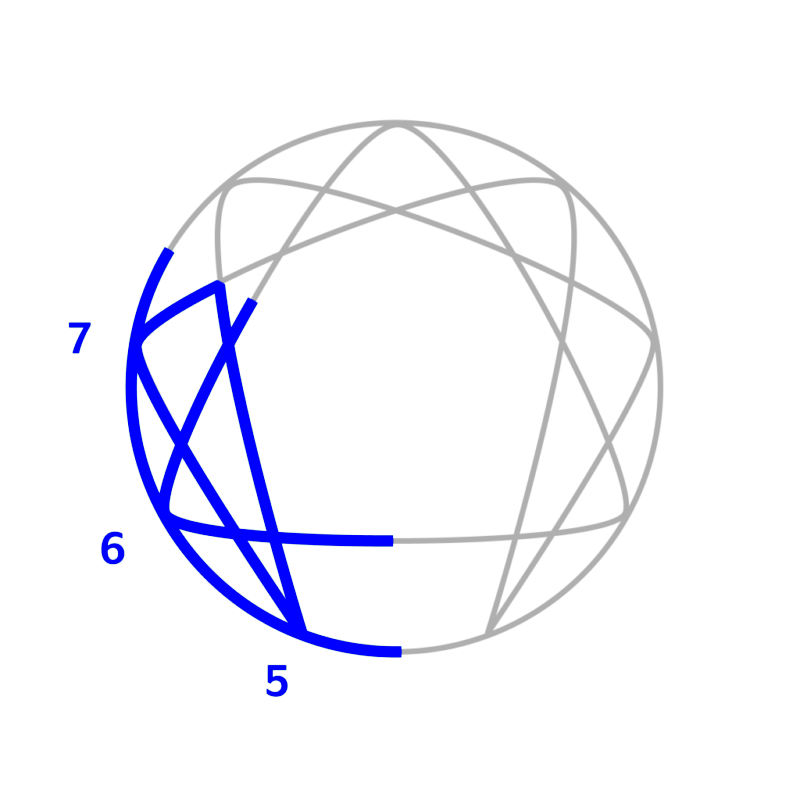
The Intellectual Center: Thinking Head Types are the ultimate problem solvers. Unafraid to probe sensitive matters and equipped with an eagle eye for detail, these sharp minds strive above all else for security through knowledge – gathering info, exploring options, and rationalizing any choice before acting.
Nine Enneagram Types
The Enneagram is a dynamic personality system that helps us understand ourselves and others better by illuminating nine unique and distinct patterns of thinking, feeling, and acting. Our Enneagram type determines what we pay attention to and how we direct our energy. By understanding our Enneagram type, we can gain greater self-awareness and work towards personal growth and development.
Each of the Nine Enneagram Types offers an insightful journey toward self-discovery. With a deep exploration into focus, life lessons, and tips for relating to each type, you can find deeper meaning in psychological patterns as well as spiritual and physical states. Discover which enneagram path resonates with you!
The Centers of the Enneagram
Body Center: Instinctive Center Type 8, Type 9, and Type 1
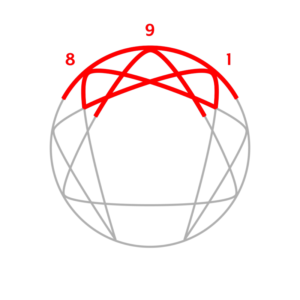
The Instinctive Center of Intelligence is associated with the Enneagram types Eight, Nine, and One called the “body types.” These types tend to be action-oriented and practical, driven by a need for control, security, and social belonging.
Suppose you are of a Body Center personality type or Instinctive Center (Type 8, Type 9, and Type 1). In that case, your approach to the world is all about adapting and evolving by remaining firmly grounded in physical sensations and gut feelings. You use influence over others to create an environment that works best for you while proactively warding off anything uncomfortable or disruptive – those legendary strategies ensure that nothing can shake your place in the universe!
Enneagram Type 8
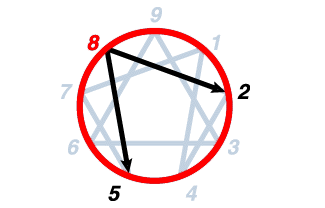
The Challenger
The Protector – Type Eights are tough, independent characters determined to maintain their power and dominance. With an inimitable sense of strength, self-confidence, boldness, and decisiveness, they can be just as quick to confront a challenge. When Type Eights unlock their full potential and use strength to improve the lives of others instead of seeking control, that’s when The Challenger emerges in all its glory!
Enneagram Type 9
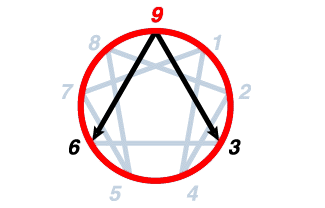
The Peacemaker
The Mediator – Type Nines are the peacemakers of the world. Creative problem solvers at heart with a go-with-the-flow attitude, Nines will strive for understanding that brings peace rather than chaos; while also having difficulty breaking out of their routine or addressing difficult truths. At their best, though, these selfless souls become indomitable sources of comfort – totally inclusive in embracing all around them!
Enneagram Type 1
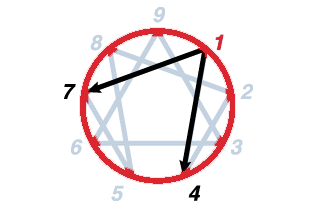
The Reformer
The Perfectionist – Type Ones strive for excellence, relentlessly seeking to improve and hold themselves incredibly accountable. Type Ones are conscientious and ethical, with a sharp sense of what is right or wrong. Not only do type ones display remarkable organization as well as attention to detail, but when at their best, they can become wise, discerning realists whose morals even border on heroic!
The Centers of the Enneagram
Heart Center: Feeling Center Type 2, Type 3, and Type 4
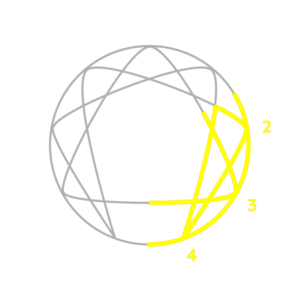
The Feeling Center of Intelligence is associated with the Enneagram types Two, Three, and Four, which are often called the “heart types.” These types tend to be emotional and empathetic, and are driven by a need for connection and validation.
At the Heart Center, understanding how to connect and empathize with others is key. The Feeling Center (Type 2, Type 3, and Type 4) is the epicenter of emotional intelligence. Heart center types thrive on tapping into their emotional intelligence to create strong relationships built off of love, approval, and mutual recognition. Still, it’s not all sunshine – inner shame can be a barrier for those trying to engage more fully emotionally.
Enneagram Type 2
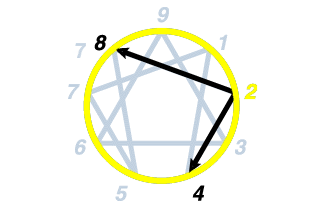
The Helper
The Giver – Type Twos are the generous, selfless teachers of relationship-building—they exemplify care and helpfulness in an effort to be loved. Driven by empathy, Twos demonstrate genuine warmth with a sincere graciousness that can become overly sentimental or possessive if not checked. At their highest potential, they have unbounded love for others manifested through unselfish giving without expectation of return, a trait we should all strive towards!
Enneagram Type 3
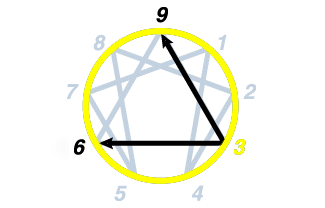
The Achiever
The Performer – Type Threes are the epitome of confident achievers; they strive to excel and be seen as successful. Achievers are the shining stars of humanity. Charming, savvy, and competitive achievers shine brighter than the rest in their pursuit of glory, pushing themselves to be admired by those around them. Type 3s, at their best, are inspirational beacons, wholly embracing themselves and setting a shining example for those around them.
Enneagram Type 4
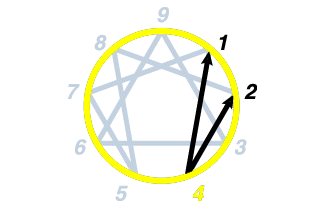
The Individualist
The Romantic – Type Fours are consistently seen as the humble, sensitively creative type. They can tap into their feelings and express them in profoundly beautiful ways – often impacting the world through artistry or poetry that easily captures human emotion. Fours may experience difficulty managing emotions at times, but they are genuinely inspiring artists who offer glimpses of ideal love when they can overcome this obstacle.
The Centers of the Enneagram
Head Center: Thinking Center Type 5, Type 6, and Type 7
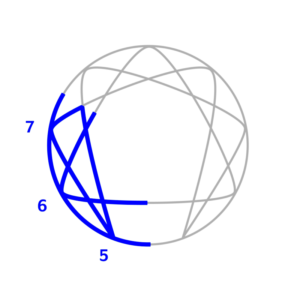
The Thinking Center of Intelligence is associated with the Enneagram Type Five, Type Six, and Type Seven, which are often called the “head types.” These types tend to be cerebral and analytical and are driven by a need for safety, knowledge, and certainty.
Head Center (Type 5, Type 6, and Type 7) in the Thinking Center are idea generators and problem solvers seeking assurance through information absorption and rational decision making. Their drive to bring stability into a chaotic world is powered by the Fear of uncertainty that often comes with life’s obstacles.
Enneagram Type 5
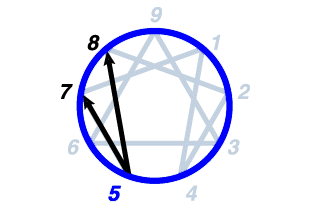
The Investigator
The Observer – Enneagram Type Fives are complex, often-misunderstood individuals. They possess a deep insight into the world and their place in it that allows them to become independent creative thinkers, but this inner focus can also lead to feelings of intense isolation from those around them. When at their best, Fives use their sharp minds as visionary pioneers – seeking out original ideas far ahead of everyone else’s comprehension – proving themselves highly perceptive and innovative observers.
Enneagram Type 6
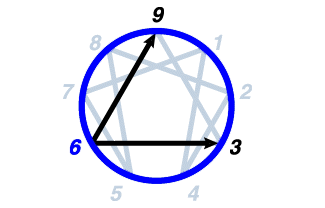
The Loyalist
The Loyal Skeptic – Enneagram Type Sixes live in a world of uncertainty and must strive to find security. They aim for harmony but also can be distrustful and edgy – adept problem-solvers who anticipate potential danger or issues with great accuracy yet often struggle with self-doubt too. The loyal skeptic is reliable, responsible, and hardworking; their inquisitive nature makes them capable friends who seek understanding in chaos while expressing caution when faced with difficult decisions.
Enneagram Type 7
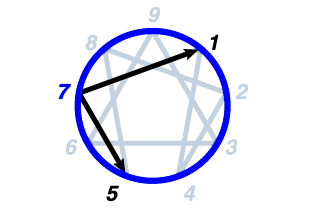
The Enthusiasts
The Epicure – Enneagram Type Sevens have boundless enthusiasm and positivity to all they do — the life of any party, always looking out for exciting new experiences! With their many talents, they can reach amazing heights – as long as these high flyers remember to stay connected with reality. If not careful, though, impulsivity may get in the way. Still, when tapped into correctly, this zestful energy creates valuable opportunities that lead them toward a deep appreciation of joy and contentment.
Enneagram 3 Instincts
Enneagram instincts and subtypes are a way of further understanding the complexities and nuances of each Enneagram type. Each of the nine types can be further categorized into three subtypes based on the dominant instinct that drives their behavior: self-preservation, social, and one-to-one.
- Self-Preservation: This instinct focuses on caring for oneself, maintaining physical comfort and security, and ensuring survival. Individuals with this instinct are often concerned with practical matters such as finances, health, and daily routines. They may appear more introverted and cautious.
- Social: (aka “Adaptive”) This instinct is focused on connecting with others and fitting in with social groups. Individuals with this instinct are often concerned with social status, reputation, and belonging. They may appear more extroverted and outgoing.
- One-to-One: (also known as Sexual or intimate) This instinct is focused on close, intimate relationships and forming one-on-one connections with others. Individuals with this instinct are often concerned with finding a deep emotional connection and may prioritize their relationships over other areas of their life. They may appear more reserved and selective in their social interactions.
Each of the nine types can have a dominant, secondary, or tertiary instinctual subtype, which can significantly influence their behavior and personality. For example, a Type Eight with a dominant self-preservation instinct may appear more guarded and focused on their own survival, while a Type Eight with a dominant social instinct may be more focused on building alliances and networks.
Understanding the subtypes can provide a deeper level of insight into the motivations and behaviors of each Enneagram type. It can also help individuals develop a more balanced and integrated approach to their instincts.
Instinctual Subtypes
27 Subtypes: Self-Preservation, Social, One-to-One
Self-Preservation Subtypes
Self-Preservation Instinct
Enneagram 1 Self Preservation
Enneagram 2 Self Preservation
Enneagram 3 Self Preservation
Enneagram 4 Self Preservation
Enneagram 5 Self Preservation
Enneagram 6 Self Preservation
Enneagram 7 Self Preservation
Enneagram 8 Self Preservation
Enneagram 9 Self Preservation
Adaptive – Social Subtypes
Social Adaptive Instinct
Social 1 Enneagram
Social 2 Enneagram
Social 3 Enneagram
Social 4 Enneagram
Social 6 Enneagram
Social 5 Enneagram
Social 7 Enneagram
Social 8 Enneagram
Social 9 Enneagram
One-to-One Subtypes
Sexual Attraction Instinct
Enneagram 1 Sexuality
Enneagram 2 Sexuality
Enneagram 3 Sexuality
Enneagram 4 Sexuality
Enneagram 5 Sexuality
Enneagram 6 Sexuality
Enneagram 7 Sexuality
Enneagram 8 Sexuality
Enneagram 9 Sexuality
9 Types
An in-depth exploration of the nine Enneagram types.
3 Centers
Instinctive, Feeling, and Thinking Centers.
27 Subtypes
Explore the twenty-seven instinctual subtypes.
3 Instincts
Self Preservation, Sexual, and Social.
Learn The Enneagram
What Are Enneagram Wings?
Enneagram wings refer to the two personality types that are adjacent to a person’s dominant Enneagram type on the Enneagram symbol. These wings are believed to influence and complement a person’s dominant type, adding different perspectives, traits, and behaviors to their personality.
While everyone possesses the potential of all nine Enneagram types, each person has a dominant type that shapes their overall personality, and their wings play a significant role in how this personality is expressed. For example, a person who is a Type Six may have either a Five-wing or a Seven-wing, and their personality can be better understood by considering the traits of the Six as they blend with the traits of either the Five or the Seven.
Some traditions of the Enneagram believe that individuals have two wings that operate more or less equally in their personality, while others believe that one wing is dominant. However, in most people, one wing is more important than the other, and this dominant wing can significantly influence their personality.
The Enneagram In Motion
‘The knowledge of the enneagram has for a very long time been preserved in secret and if it now is, so to speak, made available to all, it is only in an incomplete and theoretical form of which nobody could make any practical use without instruction from a man who knows. In order to understand the enneagram it must be thought of as in motion, as moving. A motionless enneagram is a dead symbol; the living symbol is in motion.’
-Ouspensky quotes Gurdjieff
Learn The Enneagram
A Brief History Of The Enneagram
Discovering your true self can be a journey of enlightenment. The Enneagram is an ancient system that has the power to help unlock personal potential and transformation by aiding individuals in understanding their strengths, weaknesses, and motivations – all while uncovering deep-rooted insights into who they really are. Offering wisdom from many cultures and traditions throughout centuries past, this powerful tool for self-awareness and growth continues to gain acceptance amongst modern generations seeking meaningful answers within themselves.
The Enneagram has its roots in several ancient wisdom traditions, but Oscar Ichazo first synthesized these ideas into a cohesive system of nine personality types. After many years of developing his ideas, Ichazo founded the Arica School to transmit the knowledge he had received. In 1970, a group of Americans, including notable psychologists and writers Claudio Naranjo and John Lilly, went to Arica, Chile, to study with Ichazo and experience firsthand the methods for attaining self-realization that he had developed. Through their studies with Ichazo, Naranjo, and Lilly became two of the primary pioneers in bringing the Enneagram to the Western world.
The Enneagram has since been adapted and expanded upon by many other individuals, including Helen Palmer, who created a popular system of Enneagram types in the 1980s, and Don Riso and Russ Hudson, who developed the Enneagram Institute and have contributed greatly to the understanding and development of the system. The Enneagram has become increasingly popular in secular contexts, such as psychology, leadership development, and personal growth. The Enneagram provides a framework for understanding personality and behavior and can help individuals to become more self-aware, compassionate, and effective in their personal and professional lives.
Learn
The Enneagram Courses
Introduction to Enneagram
The Enneagram is a system of nine personality types, each of which has a unique perspective on the world, motivations, and behavior patterns. The nine types are classified as the reformer, the helper, the achiever, the individualist, the investigator, the loyalist, the enthusiast, the challenger, and the peacemaker. The Enneagram also includes a system of wings, the two adjacent types that influence an individual’s dominant type.
In-Dept Exploration of the Nine Types
An in-depth exploration of the nine types involves a thorough examination of the motivations, patterns of behavior, and areas for growth of each type. This journey will uncover motivations, patterns of behavior, and growth opportunities so you can cultivate greater empathy and compassion while developing your best self. This understanding can lead to greater empathy, compassion, and personal growth and development.
Your Spiritual Development
By delving into the wisdom of the Enneagram, one can use its guidance to transcend their ego and reach for a deeper understanding. This allows us to uncover our true selves — accessing unity with ourselves, all living beings, plus everything that comprises this universe! Spiritual growth through transpersonal development is within each individual’s grasp; come learn how the nine-pointed figure helps lead you down this path today.
Advanced Studies Enneagram
Each of the nine types has a unique perspective on the world, motivations, and behavior patterns. The reformer is principled, the helper is caring, the achiever is success-oriented, the individualist is creative, the investigator is analytical, the loyalist is loyal, the enthusiast is adventurous, the challenger is confrontational, and the peacemaker is harmonious.
Instincts and Subtypes
In addition to the nine personality types, the Enneagram includes three instincts or subtypes: self-preservation, social, and one-to-one. These instincts are part of the basic human survival system and are present in everyone, regardless of their Enneagram type. Understanding one’s dominant instinct and subtype can provide further insight into their behavior patterns and motivations.
Enneagram and Relationships
The Enneagram is a valuable tool for understanding relationships and improving communication. By identifying and understanding the Enneagram types of oneself and others, individuals can gain insight into their communication styles, motivations, and areas of conflict. The Enneagram Is a valuable resource for building stronger and more meaningful relationships.
Learn The Enneagram Today!
Unlock the secrets of your identity, and embark on a journey to self-discovery. Schedule a free typing session NOW!